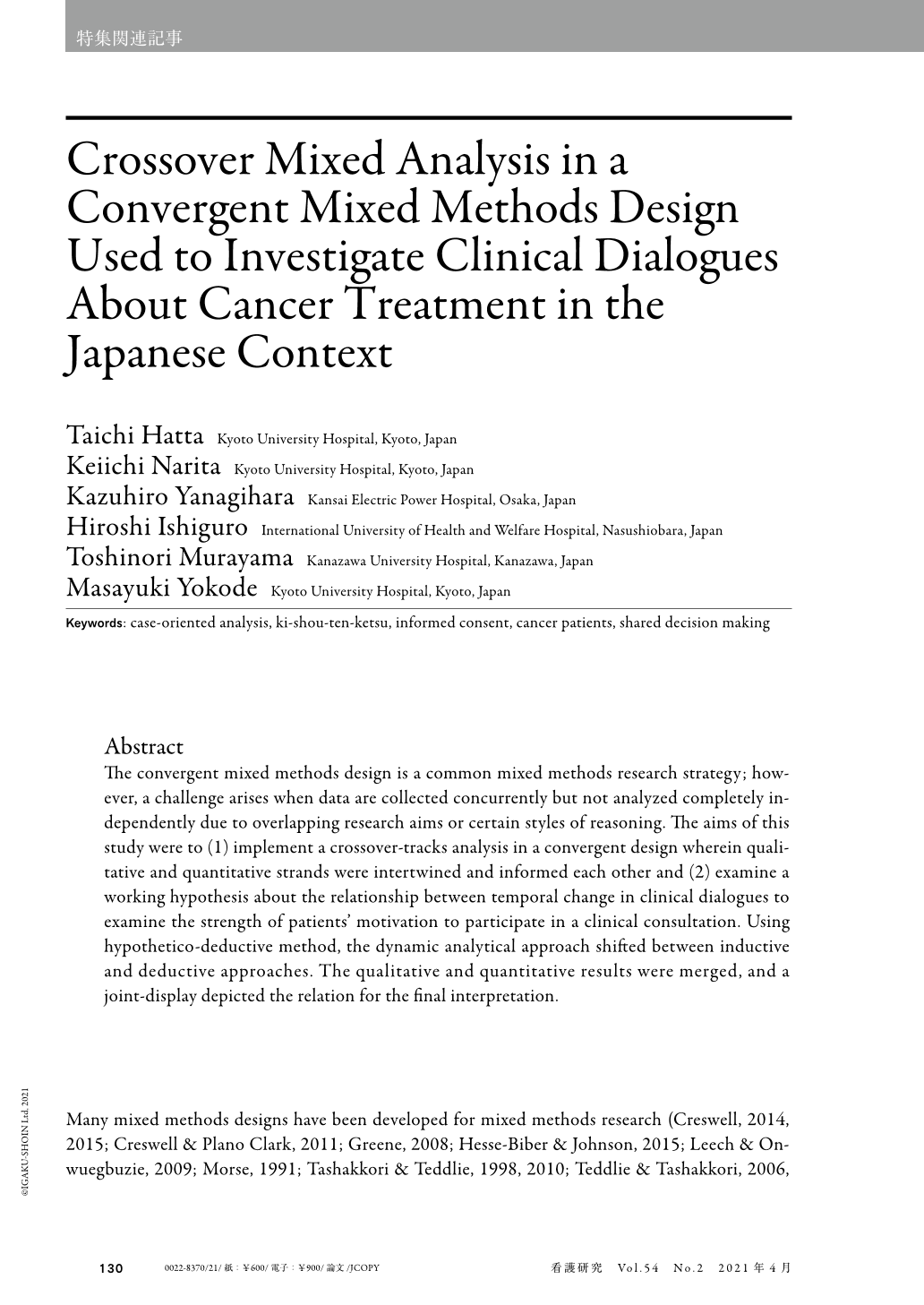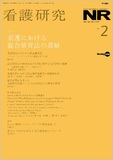Japanese
English
- 有料閲覧
- Abstract 文献概要
- 1ページ目 Look Inside
- 参考文献 Reference
Abstract
The convergent mixed methods design is a common mixed methods research strategy; however, a challenge arises when data are collected concurrently but not analyzed completely independently due to overlapping research aims or certain styles of reasoning. The aims of this study were to (1) implement a crossover-tracks analysis in a convergent design wherein qualitative and quantitative strands were intertwined and informed each other and (2) examine a working hypothesis about the relationship between temporal change in clinical dialogues to examine the strength of patients' motivation to participate in a clinical consultation. Using hypothetico-deductive method, the dynamic analytical approach shifted between inductive and deductive approaches. The qualitative and quantitative results were merged, and a joint-display depicted the relation for the final interpretation.
Abstract
The convergent mixed methods design is a common mixed methods research strategy; however, a challenge arises when data are collected concurrently but not analyzed completely independently due to overlapping research aims or certain styles of reasoning. The aims of this study were to (1) implement a crossover-tracks analysis in a convergent design wherein qualitative and quantitative strands were intertwined and informed each other and (2) examine a working hypothesis about the relationship between temporal change in clinical dialogues to examine the strength of patients' motivation to participate in a clinical consultation. Using hypothetico-deductive method, the dynamic analytical approach shifted between inductive and deductive approaches. The qualitative and quantitative results were merged, and a joint-display depicted the relation for the final interpretation.

Copyright © 2021, Igaku-Shoin Ltd. All rights reserved.


